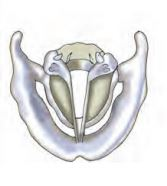Tallentex 2025 - ALLEN's Talent Encouragement Exam
ApplyRegister for Tallentex '25 - One of The Biggest Talent Encouragement Exam
NCERT Solutions for Class 8 Science Chapter 13 Sound: Welcome to the updated sound class 8 NCERT solutions. On this Careers360 page, you will find comprehensive NCERT Solution meticulously crafted by experts. Each step is explained in detail. The solutions for Chapter 13 of Class 8 Science comprise a total of thirteen questions, including multiple-choice questions, true/false statements, fill-in-the-blanks, and subjective-type questions. Our team at Careers360 has designed these answers in a step-by-step and easy-to-understand language. The PDF version of the solutions is also available for download, allowing students to utilize them at their convenience.

Solution for Sound Chapter Class 8 is part of NCERT Solutions for Class 8 Science. In day-to-day life, you hear a variety of sounds. Have you ever thought about how sounds are produced? What makes male and female voices so different from each other? You will get the know answers to these questions in solutions of NCERT class 8 science chapter 13 sound. After studying the chapter attempt NCERT exercise of science chapter 13. For better preparation CBSE NCERT solutions for class 8 science chapter 13 sound are helpful.
You must have observed that when we take a steel bucket and hit it with a small hammer, vibrations are caused. These vibrations are responsible for the production of sound. Production of sound in humans is mainly due to the presence of a voice box or larynx. It is found to be present at the upper end of the windpipe. You will understand the structure of the voice box and the mechanism of production of sound by the voice box after studying this chapter. The class 8 science chapter 13 question answer helps students in solving homework problems. The NCERT solutions for class 8 science chapter 13 sound give an explanation to 13 exercise questions.
**According to the CBSE Syllabus for the academic year 2023-24, this particular chapter has been assigned a new chapter number, which is Chapter 9.
Free download class 8 science chapter 13 NCERT solutions PDF for CBSE exam.
Q1. Choose the correct answer.
Sound can travel through
(a) gases only (b) solids only (c) liquids only (d) solids, liquids and gases.
Answer:
Sound can travel through solids, liquids and gases. But the sound does not travel in a vacuum
(d) is correct.
Choose the correct answer.
Q2. Voice of which of the following is likely to have minimum frequency?
(a) Baby girl (b) Baby boy (c) A man (d) A woman
Answer:
Voice of a man would have the lowest frequency since it is of a lower pitch than the voice of a woman, a baby boy and a baby girl. Pitch is proportional to frequency.
(c) is correct
(a) Sound cannot travel in vacuum. (T/F)
(b) The number of oscillations per second of a vibrating object is called its time period. (T/F)
(c) If the amplitude of vibration is large, sound is feeble. (T/F)
(d) For human ears, the audible range is 20 Hz to 20,000 Hz. (T/F)
(e) The lower the frequency of vibration, the higher is the pitch. (T/F)
(f) Unwanted or unpleasant sound is termed as music. (T/F)
(g) Noise pollution may cause partial hearing impairment. (T/F)
Answer:
(a) T .
Sound cannot travel in a vacuum as it requires a medium to travel.
(b) F .
The number of oscillations per second of a vibrating object is called its frequency. Time period is the time taken to complete one oscillation.
(c) F .
The sound of a vibration is directly proportional to the square of the amplitude of vibration , therefore, the sound will be feeble if the amplitude of vibration is low.
(d) T .
For humans, the audible range of frequency is 20 Hz to 20,000 Hz.
(e) F .
The pitch of a sound is directly proportional to its frequency.
(f) F .
Unwanted or unpleasant sound is termed as noise.
(g) T .
Exposure to loud noise for a long period of time may cause partial hearing impairment.
4. Fill in the blanks with suitable words.
(a) Time taken by an object to complete one oscillation is called __________.
(b) Loudness is determined by the __________ of vibration.
(c) The unit of frequency is __________
(d) Unwanted sound is called __________ .
(e) Shrillness of a sound is determined by the __________ of vibration.
Answer:
(a) Time taken by an object to complete one oscillation is called time period .
(b) Loudness is determined by the amplitude of vibration.
(c) The unit of frequency is Hertz .
(d) Unwanted sound is called noise .
(e) Shrillness of a sound is determined by the frequency of vibration.
Q5. A pendulum oscillates 40 times in 4 seconds. Find its time period and frequency.
Answer:
Time Period is defined as the time taken to complete one oscillation.
Frequency is defined as the number of oscillations per second.
Answer:
The time period of vibration is defined as the time taken to complete one oscillation.
Time Period = 0.002 s.
Answer:
(a) The stretched membrane over the body of the dholak vibrates to produce sound.
(b) The strings stretched over the body of the sitar vibrate to produce sound.
(c) The air inside the flute vibrates when air is blown into it to produce sound.
Q8 . What is the difference between noise and music? Can music become noise sometimes?
Answer:
Noise is sound which is irritating and unpleasant whereas music is sound which is pleasant and soothing. Music can turn into noise at very high volume.
Q9 . List sources of noise pollution in your surroundings.
Answer:
Sources of noise pollution in our surroundings are:
(a) Horns of vehicles on the road.
(b) Loudspeakers and radios.
(c) Crackers.
(d) Machinery inside factories and appliances at homes.
(e) The noise produced by a large number of people.
Q10 . Explain in what way noise pollution is harmful to human.
Answer:
Noise pollution can cause several health-related problems such as:
(i) Insomnia.
(ii) Anxiety and stress.
(iii) Hearing impairment
(iv) Headaches.
Answer:
I would suggest them to buy the one three lanes away from the roadside as there will be less noise pollution caused by vehicles moving on the road.
Q12 . Sketch larynx and explain its function in your own words.
Answer:

Inside the larynx, there are two vocal cords with a gap between them and when air passes through this gap the vocal cords vibrate and as we know the sound is produced when something vibrates, therefore, this vibration of vocal cords inside the larynx produce sound.
Answer:
The speed of light is much faster than the speed of sound, due to this the light emitted by lightning reaches our eyes before the sound of thunder reaches our ears and we see lightning before we hear thunder.
The solution for class 8 chapter 13 science consists of a total of thirteen questions that are a mix of multiple-choice questions, true/false statements, fill in the blanks, and subjective type questions. The experts at Careers360 have created the Class 8 Science Chapter 13 question answers in a step-by-step and easy-to-understand language. The PDF version of the solutions is also available for download, and students can use them according to their convenience.
NCERT Solutions For Class 8 Science- Chapter-wise
| Chapter 1 | Crop Production and Management |
| Chapter 2 | Microorganisms Friend and Foe In Microorganisms |
| Chapter 3 | Fibres and Plastics |
| Chapter 4 | Materials Metals and Non Metals |
| Chapter 5 | Coal and Petroleum |
| Chapter 6 | Combustion and Flame |
| Chapter 7 | Conservation of Plants and Animals |
| Chapter 8 | Cell Structure and Functions |
| Chapter 9 | Reproduction in Animals |
| Chapter 10 | Reaching the Age of Adolescence |
| Chapter 11 | Force and Pressure |
| Chapter 12 | Friction |
| Chapter 13 | Sound |
| Chapter 14 | Chemical Effects of Electric Current |
| Chapter 15 | Some Natural Phenomena |
| Chapter 16 | Light |
| Chapter 17 | Stars and the Solar System |
| Chapter 18 | Pollution of Air and Water |
Subtopics of sound class 8 are given below:
13.1 Sound is Produced by a Vibrating Body
13.2 Sound Produced by Humans
13.3 Sound Needs a Medium for Propagation
13.4 We Hear Sound through Our Ears
13.5 Amplitude, Time Period and Frequency of a Vibration
13.6 Audible and Inaudible Sounds
13.7 Noise and Music
13.8 Noise Pollution
Sound is a form of energy produced by vibrating objects.
It travels in the form of waves.
Sound waves require a medium (solid, liquid, or gas) for propagation.
Sound travels in the form of compressional waves.
The speed of sound depends on the medium it travels through.
Sound waves can be characterized by their frequency (pitch) and amplitude (loudness).
Sound is produced when an object vibrates.
The vibrating object sets surrounding air molecules into vibration, creating a sound wave.
Frequency = speed of sound/wavelength
Loudness = (power of the sound) / (distance from the source of the sound)
Sounds with frequencies below 20 Hz are infrasound (inaudible).
Sounds with frequencies above 20,000 Hz are ultrasound (inaudible to humans).
Comprehensive Coverage: These sound class 8 ncert solutions encompass all the important topics related to sound in the Class 8 curriculum.
Concept Clarity: The answers provide clear and concise explanations to ensure students understand the concepts thoroughly.
Variety of Questions: The class 8 science chapter 13 ncert solutions cover a range of topics, including the properties of sound, how sound travels, and its applications.
Practice Questions: Multiple practice questions of class 8 sound ncert solutions help students reinforce their understanding and problem-solving skills.
Visual Aids: Diagrams and illustrations in science chapter 13 class 8 solution are included where relevant to enhance understanding.
Free Access: These class 8 science ch 13 question answer are freely accessible, making them available to all students for study and revision.
These features make ch 13 science class 8 a valuable resource for students, facilitating their understanding of the subject and preparation for exams.
Also Check NCERT Books and NCERT Syllabus here:
Frequency is number of cycles per second. Frequency is measured in Hz. 1Hz=1/1 second
The vibration of vocal cords inside the larynx produce sound
Pitch is proportional to frequency.
Topics of sound class 8 are given below:
13.1 Sound is Produced by a Vibrating Body
13.2 Sound Produced by Humans
13.3 Sound Needs a Medium for Propagation
13.4 We Hear Sound through Our Ears
13.5 Amplitude, Time Period and Frequency of a Vibration
13.6 Audible and Inaudible Sounds
13.7 Noise and Music
13.8 Noise Pollution
Sound is a form of energy that travels through a medium via vibrations, and can be heard by human ears when sound waves cause vibrations in the eardrum.
Late Fee Application Date:22 July,2024 - 31 July,2024
Late Fee Application Date:22 July,2024 - 31 July,2024

Register for Tallentex '25 - One of The Biggest Talent Encouragement Exam

Get up to 90% scholarship on NEET, JEE & Foundation courses

As per latest 2024 syllabus. Physics formulas, equations, & laws of class 11 & 12th chapters

As per latest 2024 syllabus. Chemistry formulas, equations, & laws of class 11 & 12th chapters

Accepted by more than 11,000 universities in over 150 countries worldwide

Register now for PTE & Save 5% on English Proficiency Tests with ApplyShop Gift Cards